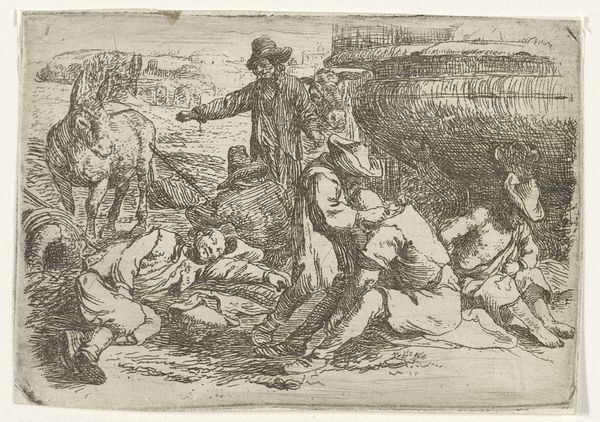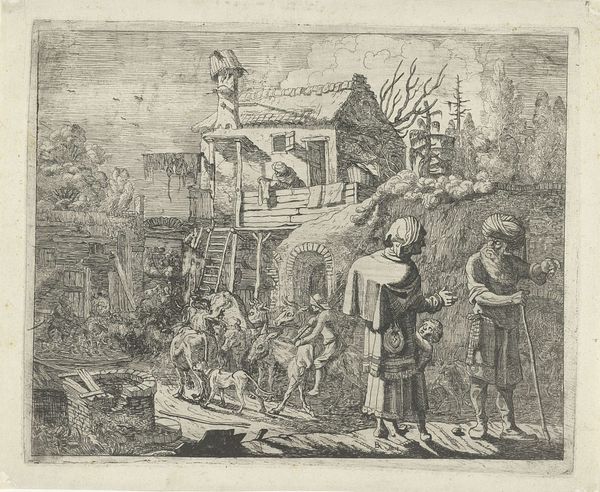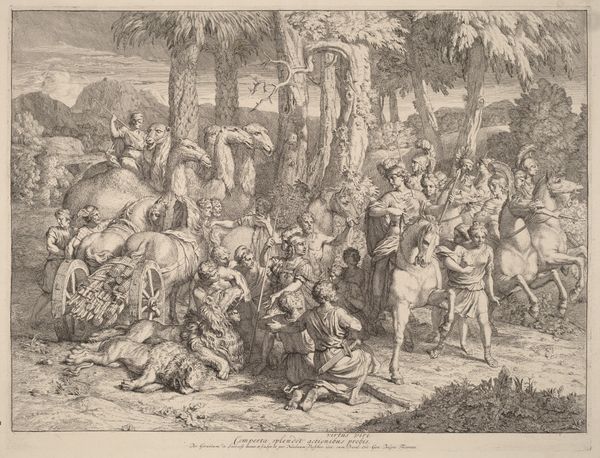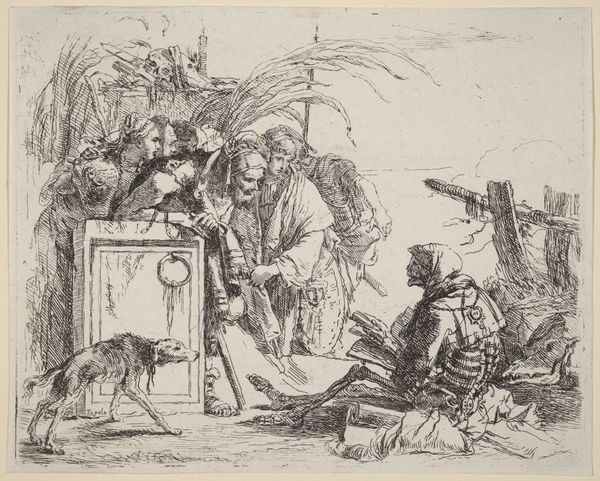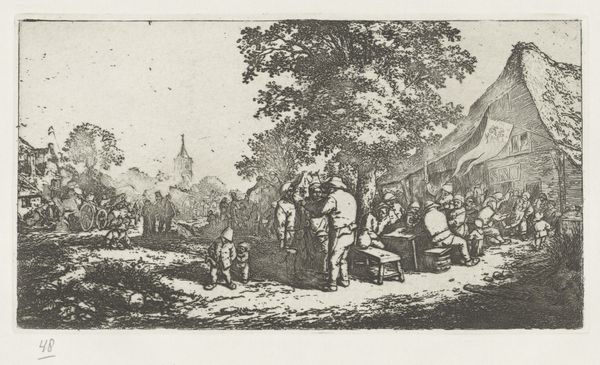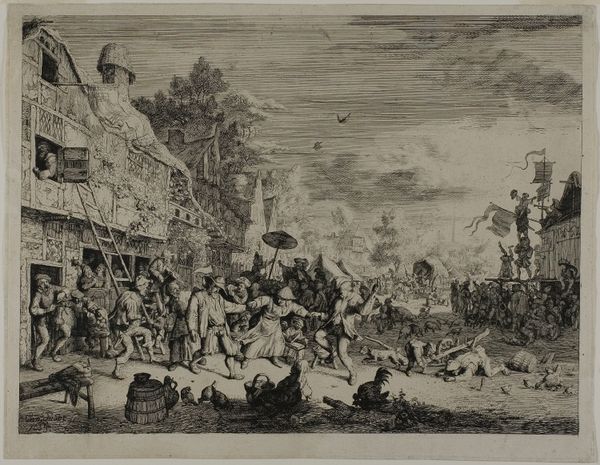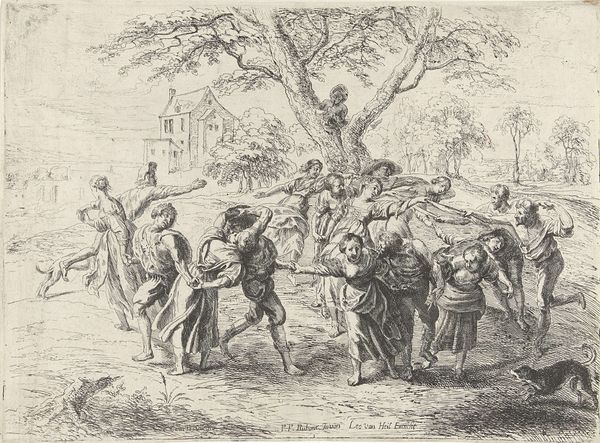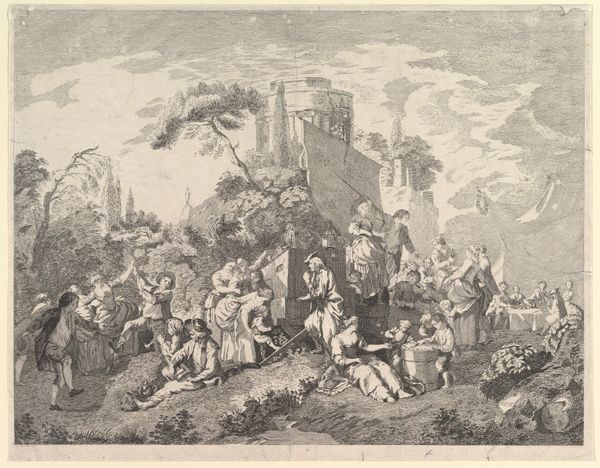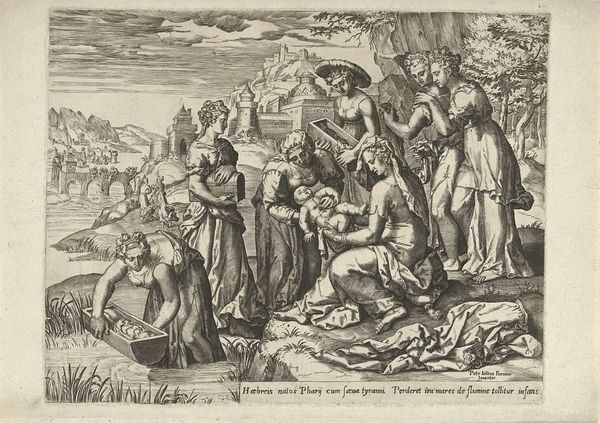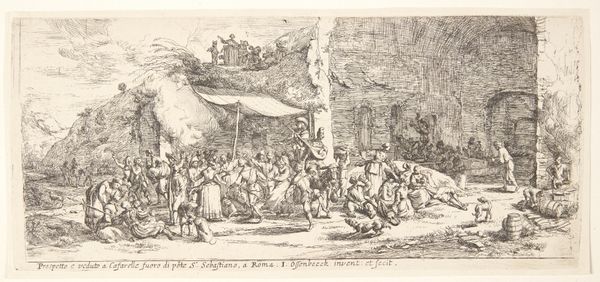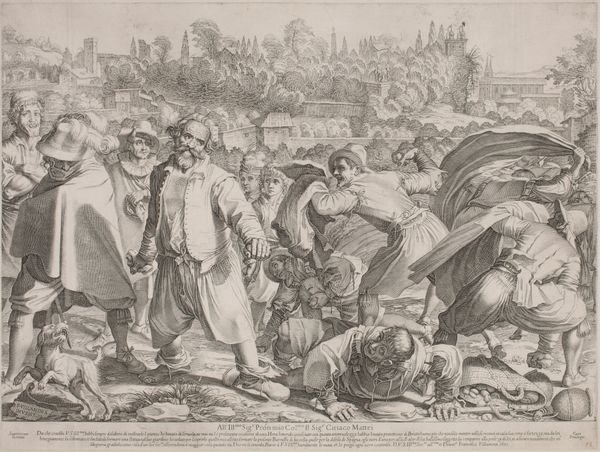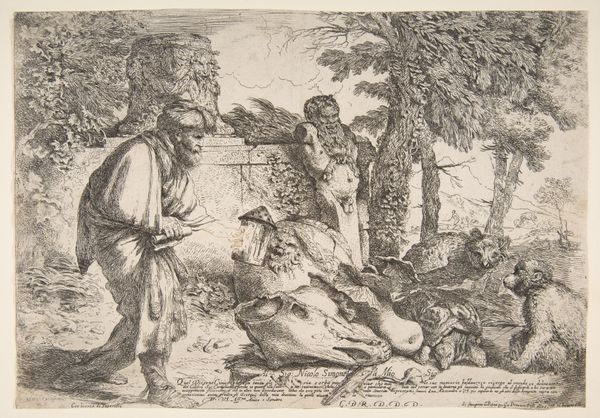
The Resting Gypsy Family in Front of a Ruined Inn 1630 - 1660
0:00
0:00
drawing, print, etching, paper
#
drawing
#
baroque
# print
#
etching
#
landscape
#
paper
#
genre-painting
Dimensions: 353 × 432 mm (plate); 360 × 438 mm (sheet)
Copyright: Public Domain
Curator: The etching "The Resting Gypsy Family in Front of a Ruined Inn," dating from 1630-1660, and attributed to Gerrit de Heer, offers such a dense social tableau. What strikes you most when you look at it? Editor: The sheer number of figures, contrasted against the dilapidated building and the wild landscape. It feels almost overwhelming, like a snapshot of a transient community. How do you interpret this work, particularly its depiction of "gypsies"? Curator: That's a great starting point. The term "gypsy," of course, is now understood as a racial slur, reflecting the historical oppression of the Roma people. In the 17th century, depictions like these were often steeped in stereotypes, casting Roma as vagrants, outsiders, even threats to settled society. What power dynamics do you see reflected in the composition? Editor: Well, they seem to be pushed to the margins, both physically—by the edge of the scene, near ruins—and maybe socially. They're resting, but there's a sense of precariousness. Is the ruined inn a symbol, perhaps, of the established order in decline, or a reflection of their own statelessness? Curator: Exactly. Consider the prominent ruin, a stark reminder of impermanence, juxtaposed with the communal life of the Roma family. De Heer seems to be inviting us to question the supposed stability of the dominant culture by highlighting those it marginalizes. And how does the artistic style affect the message? Editor: The detailed etching emphasizes every crack in the wall, every wrinkle in their clothing, creating a very textured, almost visceral, image of poverty and displacement. The light also focuses on them, making them very visible within their marginalized position. Curator: Precisely. By rendering them in such detail, de Heer challenges their erasure and demands the viewer confront the human cost of social and economic inequalities. What have you learned? Editor: I see how art from the past can reflect biases but also invite critical reflection on social justice and power. Curator: And that's the point: to encourage critical dialogue. Every line, every composition decision can be read as a comment on society's treatment of marginalized people.
Comments
No comments
Be the first to comment and join the conversation on the ultimate creative platform.
